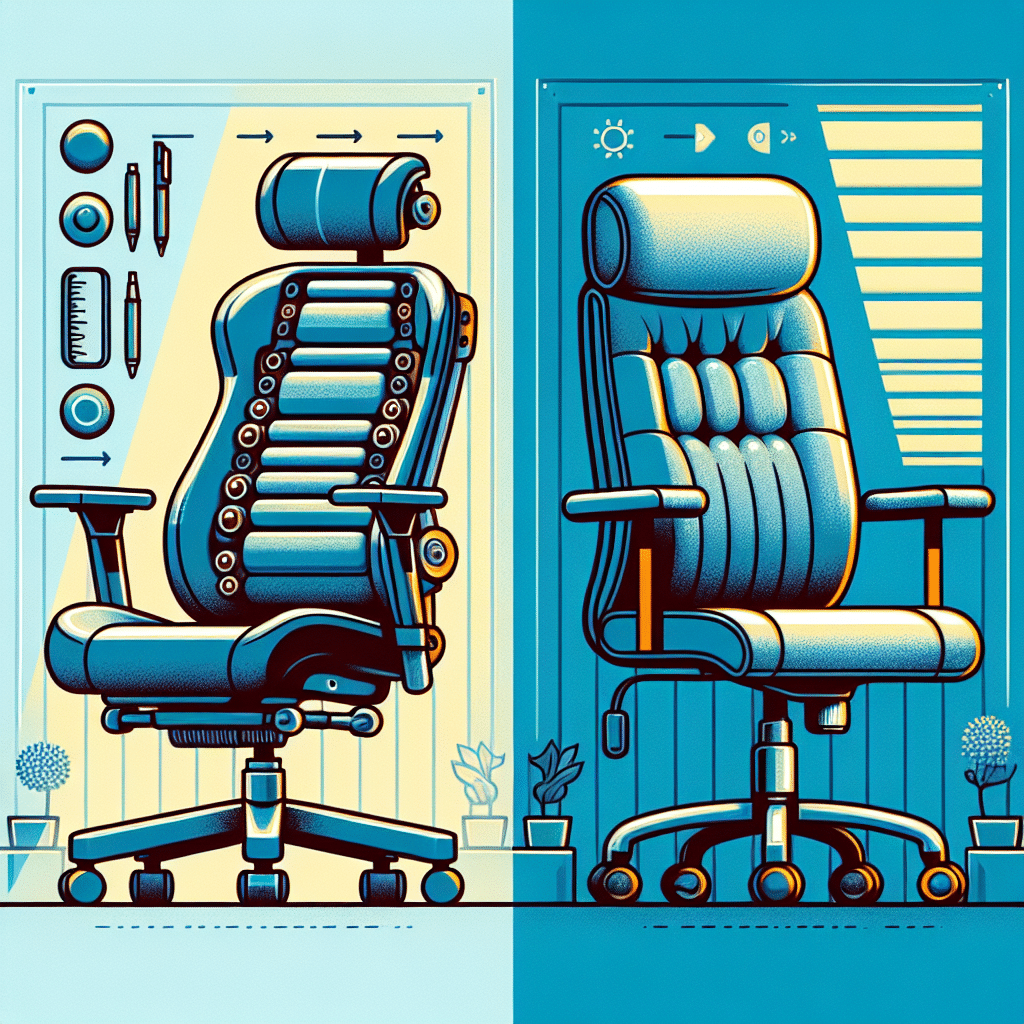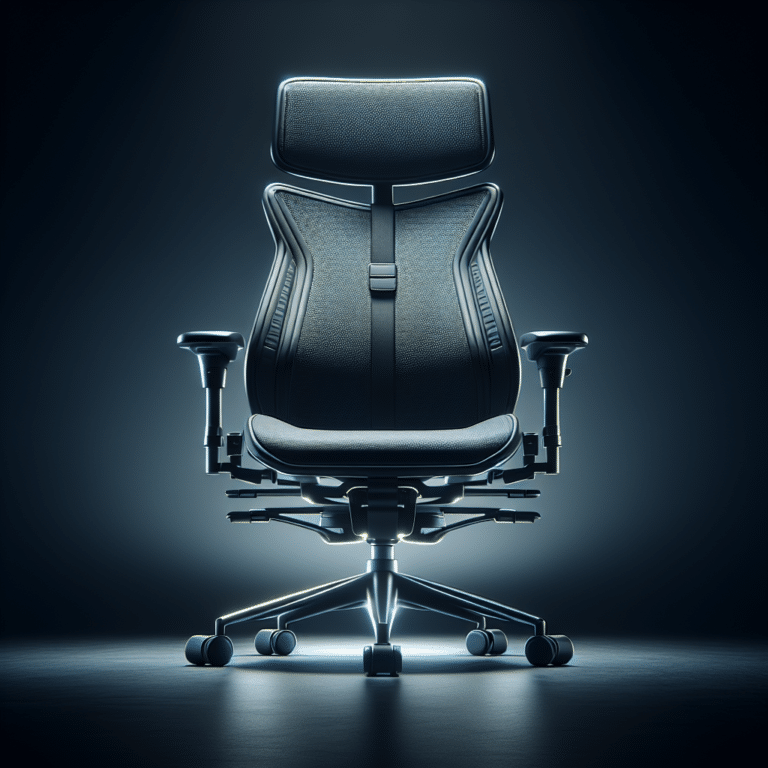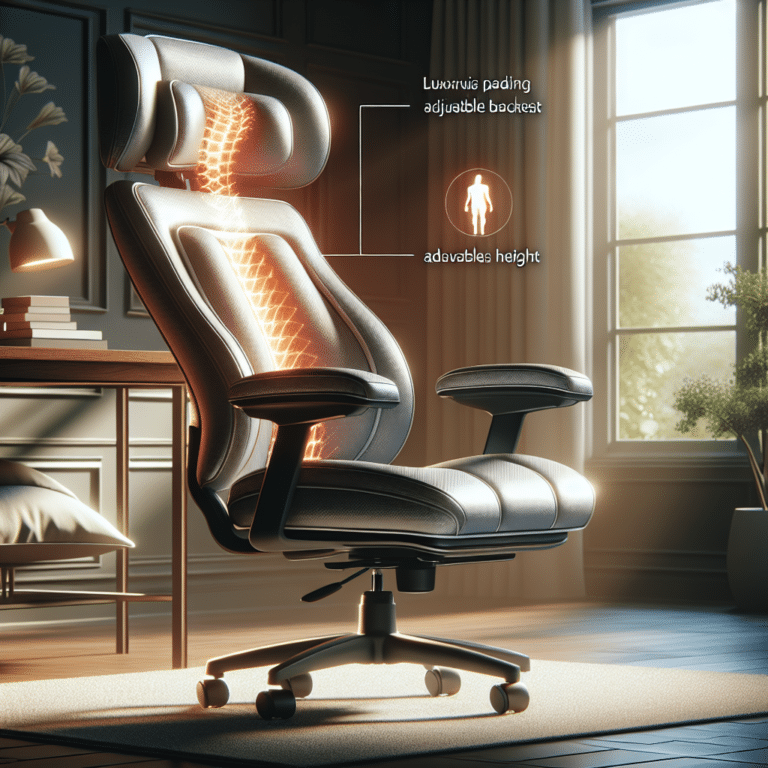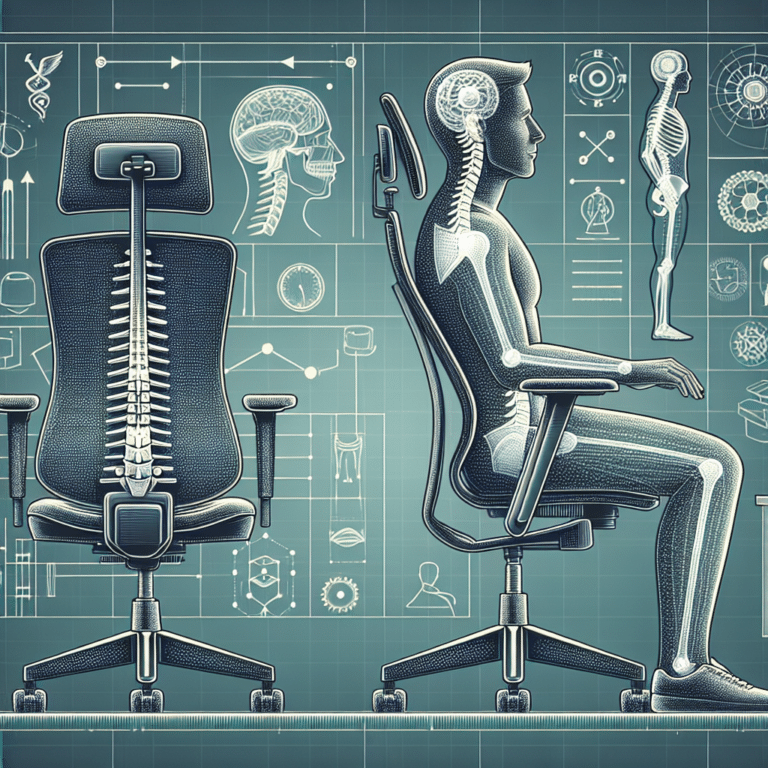Ergonomic Chairs Vs. Standard Chairs: Which Is Better?
When it comes to choosing the perfect chair, the battle between ergonomic and standard chairs seems never-ending. Both have their own merits and drawbacks, but which one is truly better? In this article, we will explore the key differences between ergonomic chairs and standard chairs, assessing their comfort levels, health benefits, and overall design to guide you in making the right choice for a chair that will keep you comfortable and supported throughout the day. Whether you’re working from home or in an office setting, finding the right chair can make all the difference in your productivity and well-being.
Understanding Ergonomics in Chair Design
Ergonomics is the science of designing products that fit the human body while providing comfort and support. In the context of chair design, ergonomics focuses on creating seating solutions that promote good posture, prevent musculoskeletal disorders, and enhance productivity. By considering the natural movements and needs of the human body, ergonomic chair design aims to optimize both physical health and overall well-being.
Principles of Ergonomic Chair Design
The principles of ergonomic chair design revolve around the concept of providing optimal support and adjustability. A well-designed ergonomic chair should have adjustable features that allow the user to personalize their seating experience. This includes features such as adjustable seat height, backrest angle, lumbar support, and armrest position. Additionally, ergonomic chairs often incorporate ergonomic curves and shapes that follow the natural contours of the human body, providing adequate support to the spine, neck, and lower back.
Benefits of Ergonomics in the Workplace
Investing in ergonomic chairs for the workplace offers numerous benefits for both employers and employees. From the employee’s perspective, ergonomic chairs promote better posture, reduce the risk of musculoskeletal disorders, and enhance overall comfort. This leads to decreased fatigue, increased productivity, and improved job satisfaction. Employers also benefit from investing in ergonomic chairs as it reduces the number of work-related injuries, lowers absenteeism, and ultimately increases employee retention and performance.
Overview of Standard Chairs
Standard chairs, on the other hand, are designed with a one-size-fits-all approach. They follow a generic design that may not be suitable for everyone’s needs. Standard chairs typically lack the adjustability and support features found in ergonomic chairs. They are often made with cheaper materials and may not be built to withstand long hours of use.
Characteristics of Standard Chairs
Standard chairs are usually characterized by their basic design and lack of adjustability. They typically have a fixed seat height, non-adjustable backrest, and limited or no lumbar support. These chairs often prioritize aesthetics and affordability over ergonomic considerations, which can lead to discomfort and poor posture with prolonged use.
Material and Build Quality
Standard chairs are commonly made with lower-quality materials compared to ergonomic chairs. This can result in decreased durability and potential discomfort for the user. The lack of attention to build quality in standard chairs often means that they may not withstand the demands of daily use in a workplace setting.
Common Environments for Standard Chairs
Standard chairs are commonly found in various environments such as waiting rooms, cafeterias, and conference rooms. They are often used in settings where short periods of sitting are expected, and prolonged comfort and support are not a top priority. In these environments, the focus is more on providing seating options that are cost-effective and visually appealing rather than being ergonomically optimized for long-term use.
Physical Impact on the User
The physical impact of chairs on the user is a crucial aspect to consider, especially when comparing ergonomic chairs with standard ones. Ergonomic chairs are specifically designed to promote good posture and provide adequate support to the user’s back, neck, and lower body. This helps alleviate the strain on muscles and joints, reducing the risk of developing musculoskeletal disorders.
Posture and Support
Ergonomic chairs prioritize maintaining proper posture by providing adjustable features that can be tailored to the individual’s needs. The ability to adjust the seat height, backrest angle, and lumbar support ensures that the user can sit in a position that keeps the spine aligned and reduces pressure on the neck and back. In contrast, standard chairs often lack these adjustable features, making it challenging to achieve optimal posture and support.
Long-Term Health Implications
Prolonged use of standard chairs with inadequate support can lead to various health issues, including back and neck pain, muscle stiffness, and poor circulation. These chairs often force users into unnatural positions, causing stress on the body and increasing the risk of developing chronic conditions such as herniated discs or sciatica. In contrast, ergonomic chairs aim to mitigate these risks by offering customizable support and promoting proper alignment, thus reducing long-term health implications.
Immediate Comfort
Drawing on their ergonomic design principles, ergonomic chairs prioritize immediate comfort for the user. The adjustable features allow individuals to find the most comfortable position, relieving pressure points and minimizing discomfort during long periods of sitting. The enhanced padding and cushioning in ergonomic chairs also contribute to immediate comfort by providing adequate support to the body.
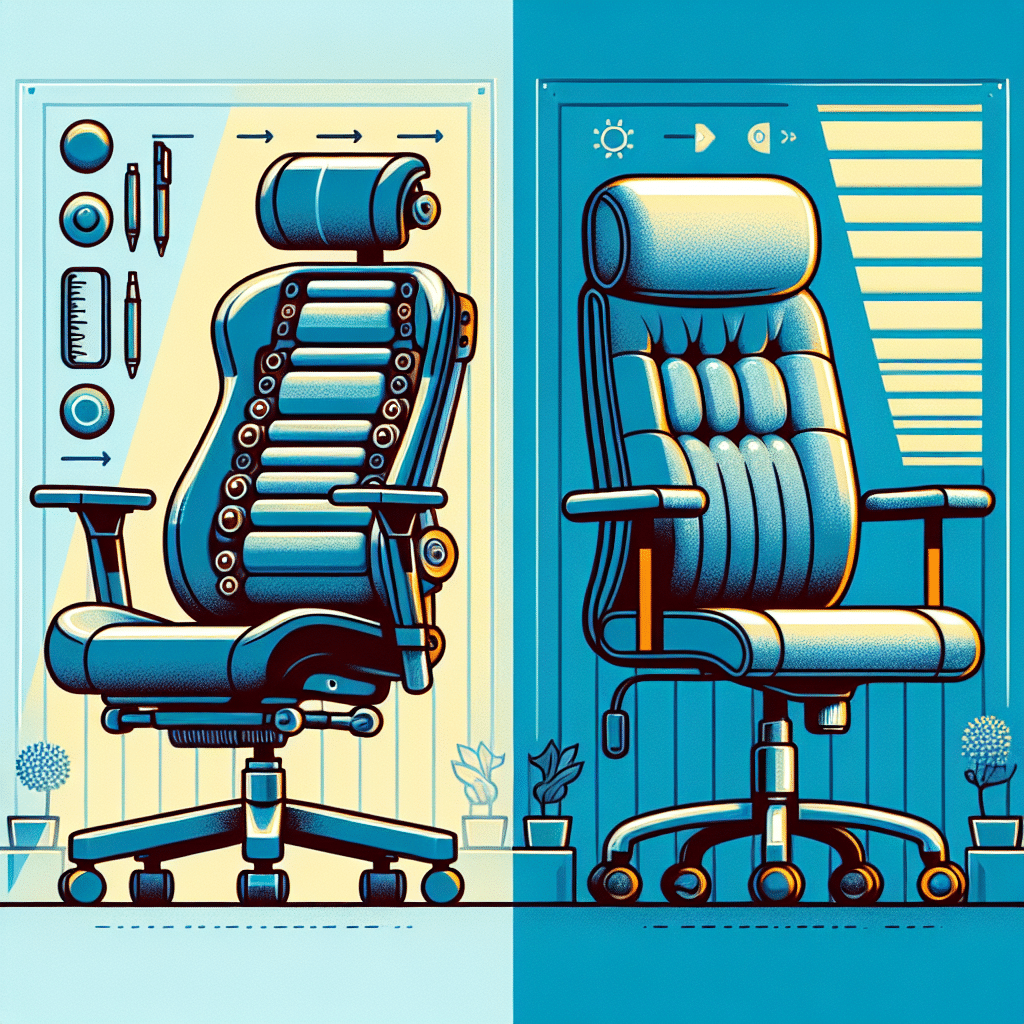
Productivity and Ergonomics
The impact of chair design on work performance is often overlooked, but it plays a significant role in an employee’s productivity and overall well-being. Ergonomic chairs can contribute positively to work performance in several ways.
Influence on Work Performance
Ergonomic chairs can positively influence work performance by reducing fatigue and discomfort. When individuals are comfortable and properly supported, they can maintain focus and concentration for longer periods, leading to increased productivity. The adjustability of ergonomic chairs allows users to change positions throughout the day, preventing monotony and promoting alertness.
Reduction of Work-Related Injuries
One of the main benefits of ergonomic chairs is their ability to reduce work-related injuries. By providing proper support and adjustability, ergonomic chairs minimize the risk of developing musculoskeletal disorders such as carpal tunnel syndrome, tendinitis, and lower back pain. This, in turn, reduces the number of workplace injuries and ailments, resulting in decreased absenteeism and lower healthcare costs for both the employee and employer.
Mental Focus and Ergonomics
Research has shown that ergonomic chairs also have a positive impact on mental focus and overall well-being. When individuals are comfortable and supported, they experience less physical discomfort, allowing them to concentrate on their work and be more engaged. This leads to improved job satisfaction, reduced stress levels, and better overall mental health.
Customization and Adjustability
Customization and adjustability are key features that distinguish ergonomic chairs from standard chairs. Ergonomic chairs prioritize personalization to cater to the individual’s specific needs, promoting individual comfort and support.
Adjustable Features of Ergonomic Chairs
Ergonomic chairs offer a wide range of adjustable features to accommodate different body types and preferences. These features include adjustable seat height, seat depth, backrest angle, lumbar support, armrest position, and headrest height. This level of adjustability allows users to find their optimal seating position, alleviating strain on their bodies and reducing the risk of discomfort or injury.
One-Size-Fits-All Approach of Standard Chairs
Standard chairs lack the customization and adjustability found in ergonomic chairs. They follow a one-size-fits-all approach, assuming that the same chair design is suitable for everyone. This can be problematic as individuals have different body types, heights, and comfort preferences. Consequently, standard chairs can often be uncomfortable and lack the necessary support for extended periods of sitting.
Adapting to Different Body Types
Ergonomic chairs excel in adapting to different body types by offering a range of adjustable features. By providing options to modify seat height, backrest angle, and other crucial settings, ergonomic chairs can accommodate individuals of various heights, weights, and body proportions. This inclusivity ensures that users can find a comfortable and supportive position, regardless of their body type.
Cost and Investment
When comparing ergonomic chairs with standard chairs, cost and investment are key considerations. While ergonomic chairs may have a higher initial price, they offer significant long-term cost effectiveness and durability.
Initial Price Comparison
Ergonomic chairs generally have a higher price tag compared to standard chairs. This is because ergonomic chairs prioritize high-quality materials, adjustability, and ergonomic design principles. While the upfront cost may deter some, it is important to consider the long-term benefits and potential savings that come with investing in ergonomic chairs.
Long-Term Cost Effectiveness
Despite the higher initial price, ergonomic chairs can be more cost-effective in the long run. The adjustable features and customizable support provided by ergonomic chairs can prevent work-related injuries and reduce discomfort or pain associated with prolonged sitting. By prioritizing employee health and well-being, ergonomic chairs can lead to increased productivity, lower healthcare costs, and decreased absenteeism, ultimately resulting in long-term cost savings for employers.

Warranty and Durability
Ergonomic chairs often come with longer warranties and are built to withstand the demands of daily use. High-quality materials and sturdy construction ensure that ergonomic chairs maintain their functionality and comfort for an extended period. On the other hand, standard chairs, which are often made with cheaper materials, may need to be replaced more frequently due to wear and tear or lack of support.
Aesthetic and Design Variations
The aesthetics and design variations between ergonomic chairs and standard chairs are important factors to consider, especially in office environments where visual appeal and overall design coherence play a significant role.
Ergonomic Chairs and Modern Office Aesthetics
Ergonomic chairs have evolved to blend seamlessly with modern office aesthetics. They are available in a wide range of designs, materials, and color options, allowing them to complement various office interiors and design styles. From sleek and minimalistic designs to more contemporary and vibrant options, ergonomic chairs offer a versatile range of choices that can enhance the overall look and feel of the workspace.
Traditional Look of Standard Chairs
Standard chairs often have a more traditional and generic appearance. They are designed to be universally acceptable and may not align with the specific aesthetic preferences of a modern office setting. While some standard chairs may offer a variety of color options, they often lack the visual appeal and design sophistication found in ergonomic chairs.
Impact on Office Design
The choice between ergonomic chairs and standard chairs can impact the overall design of an office space. Ergonomic chairs, with their aesthetic variations and modern appeal, can contribute to a cohesive and visually pleasing office environment. In contrast, standard chairs may lack the design considerations necessary to enhance the office aesthetics, potentially creating a mismatched or outdated appearance.
The Environmental Perspective
Considering the environmental impact of chair manufacturing is crucial in today’s world, where sustainability is of utmost importance. Both ergonomic chairs and standard chairs have different implications from an environmental perspective.
Sustainability in Chair Manufacturing
Ergonomic chair manufacturers often prioritize sustainability by using eco-friendly materials, minimizing waste, and promoting recycling practices. The emphasis on durability and long-term functionality in ergonomic chairs reduces the need for frequent replacements, ultimately resulting in less furniture waste. Additionally, some ergonomic chairs may be made from recycled materials, further reducing their environmental footprint.
Recyclability of Materials
Ergonomic chairs are often made with recyclable materials, allowing them to be repurposed or recycled at the end of their lifespan. Manufacturers may use materials such as recycled plastics, sustainable wood, or metal alloys that are known for their recyclability. This ensures that ergonomic chairs have a reduced impact on landfill waste.
Environmental Cost Over Lifetime
Standard chairs, due to their lower build quality and shorter lifespan, often end up in landfills more frequently than ergonomic chairs. The environmental cost of producing and disposing of these chairs can be significant, as it involves the extraction of raw materials, energy consumption, and waste generation. Ergonomic chairs, with their emphasis on durability and recyclability, offer a more environmentally friendly alternative by minimizing the overall environmental cost over their lifetime.
Ergonomic Chairs in the Home Office
With the rise of remote working, the implications of chair design in home office settings have become increasingly important to consider. Adapting the home environment to ergonomic principles can significantly impact comfort, productivity, and overall well-being.
The Rise of Remote Working
Remote working has become increasingly prevalent in recent years, and it has further accelerated in the wake of the COVID-19 pandemic. As more individuals set up home offices, the importance of creating ergonomic workspaces has gained significant attention. Ergonomic chairs play a crucial role in ensuring that individuals working from home have proper support and comfort for extended periods of work.
Adapting Home Environments to Ergonomics
In home office settings, it is important to prioritize ergonomics to create a conducive work environment. Ergonomic chairs are designed to provide the necessary support and adjustability to promote good posture and prevent discomfort. By incorporating ergonomic principles in the home office, individuals can minimize the risk of developing musculoskeletal disorders and maintain optimal productivity and well-being.
Balancing Comfort and Professional Needs at Home
One challenge of setting up a home office is striking the right balance between comfort and professionalism. Ergonomic chairs offer a solution that meets both requirements. They provide the necessary support and comfort to promote physical well-being while still maintaining a professional appearance. The wide range of design options available in ergonomic chairs ensures that individuals can choose a chair that fits their aesthetic preferences and blends seamlessly into the home office environment.
Conclusion: Summing Up the Comparison
When comparing ergonomic chairs with standard chairs, it becomes clear that ergonomic chairs offer numerous advantages in terms of comfort, support, productivity, and overall well-being. While standard chairs may be more visually appealing or affordable in the short term, they often lack the necessary features and adjustability to promote long-term health and efficiency in the workplace.
Key Takeaways on Ergonomic vs. Standard Chairs
- Ergonomic chairs prioritize comfort, support, and adjustability to promote good posture and reduce the risk of musculoskeletal disorders.
- Standard chairs lack the customization and adjustability necessary for individual comfort and support.
- Ergonomic chairs have a positive impact on work performance, reducing fatigue, and promoting mental focus.
- Standard chairs can lead to work-related injuries and discomfort due to their generic design and lack of support.
- Ergonomic chairs offer long-term cost savings and durability, despite their higher initial price.
- The aesthetics and design variations of ergonomic chairs enhance office aesthetics, while standard chairs may lack modern appeal.
- Ergonomic chairs prioritize sustainability through the use of eco-friendly materials and recyclability.
- Ergonomic chairs play a significant role in creating comfortable and productive home office environments.
- Balancing comfort and professionalism is achievable with ergonomic chairs in home office settings.
Final Recommendations
Based on the comparison between ergonomic chairs and standard chairs, it is clear that investing in ergonomic chairs is the better choice for workplaces and home offices alike. The numerous benefits they offer, including enhanced comfort, support, productivity, and long-term cost savings, make them the superior option. Employers and individuals should prioritize the well-being and health of employees by choosing ergonomic chairs that prioritize ergonomic design principles and adjustability.
Encouraging Healthy Seating Practices
In addition to investing in ergonomic chairs, promoting healthy seating practices is crucial for individuals to fully benefit from their ergonomic chairs. Encouraging frequent breaks, stretching exercises, and maintaining proper posture throughout the day can further boost the advantages of ergonomic chairs. By combining ergonomic chairs with healthy habits, individuals can create a truly supportive and comfortable work environment, leading to improved overall well-being and productivity.

